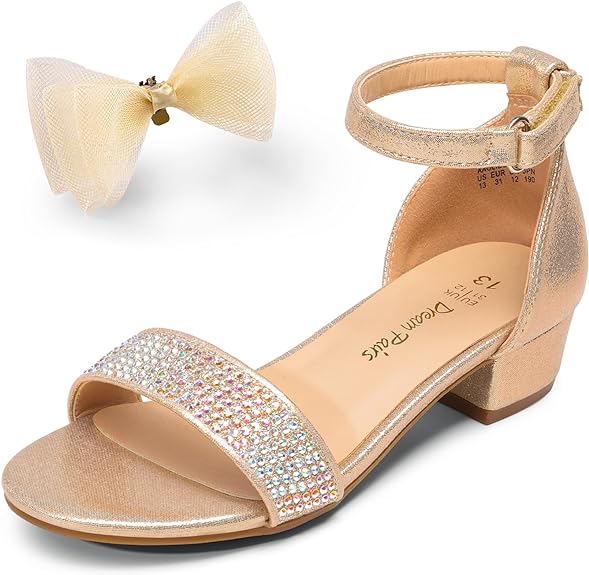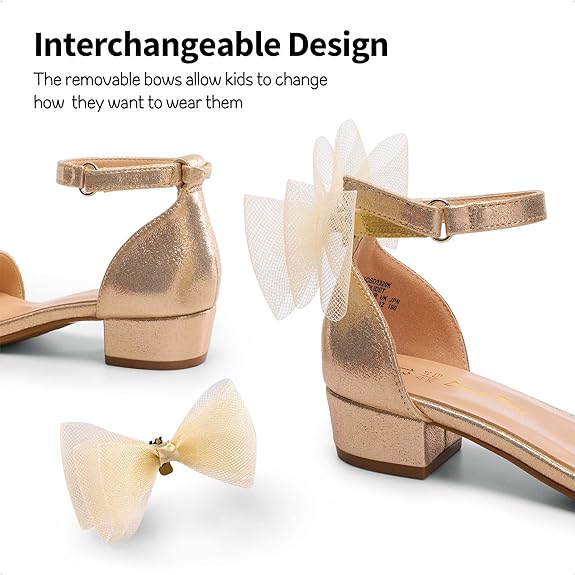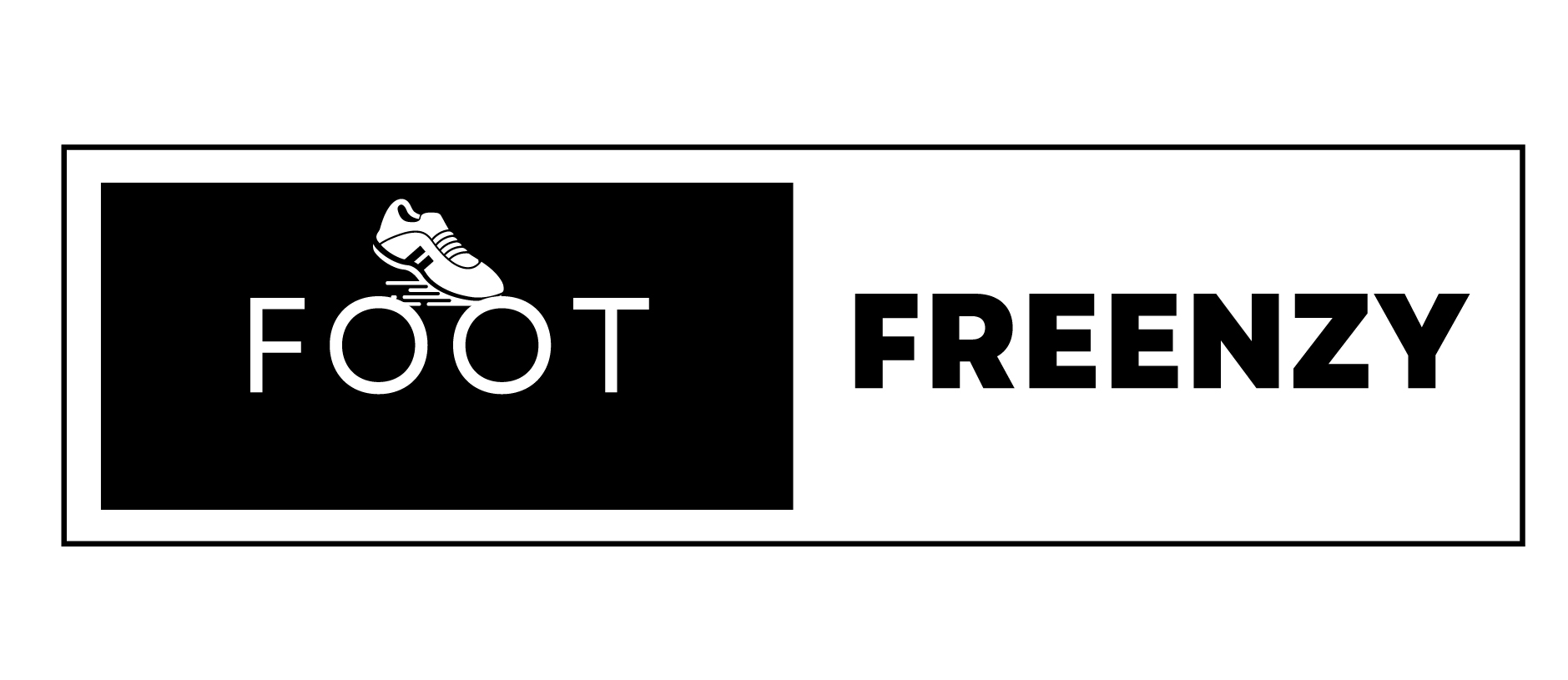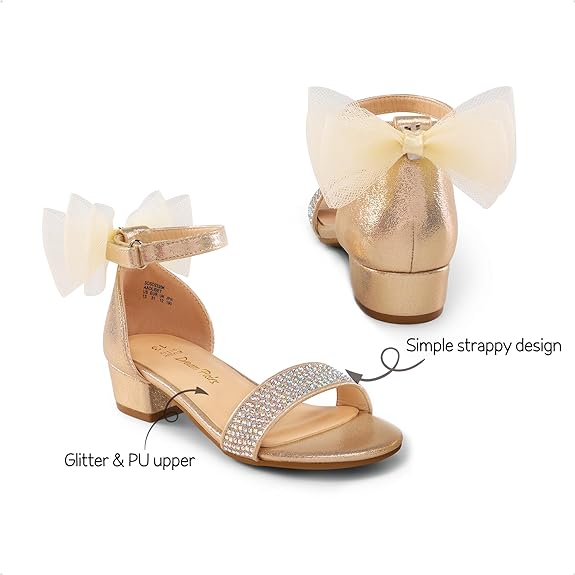In the ever-evolving landscape of fashion, trends tend to transcend age barriers, impacting not just adults but also the youngest members of society – children. In recent years, a concerning trend has emerged, drawing attention and sparking debates among parents, educators, and health professionals alike: kid shoes with heels.
As we delve into this contentious topic, it becomes evident that the world of children’s fashion is undergoing a paradigm shift. Where comfort and practicality were once paramount, there now exists a growing fascination with miniature versions of adult attire, including shoes adorned with elevated heels. These pint-sized replicas, often marketed as trendy and stylish, have polarized opinions, creating a rift between those who view them as harmless accessories and others who are deeply concerned about their impact on developing bodies and minds.
This blog aims to unravel the layers of this complex issue, exploring the origins and proliferation of kid shoes with heels, dissecting the potential health consequences, delving into parental concerns, and questioning the role of the fashion industry in shaping the choices available to our youngest consumers. We will navigate through the arguments for and against this trend, considering cultural influences, societal norms, and the psychological aspects that underpin children’s fashion choices.
The Rise of Kid Shoes With Heels
The rise of kid shoes with heels represents a notable shift in the landscape of children’s fashion, mirroring adult trends in an unprecedented manner. Once an accessory exclusively associated with grown-ups, heels have seamlessly transitioned into the realm of childhood, adorning the feet of the youngest fashion enthusiasts. This phenomenon, fueled by influential marketing campaigns and popular culture, has seen an influx of miniature high-heeled shoes on store shelves, captivating the attention of both parents and their children. The allure of these pint-sized heels lies in their ability to transform little ones into miniature versions of stylish adults, blurring the lines between age-appropriate attire and adult fashion emulation.
As this trend gains momentum, it prompts crucial questions about the commercialization of childhood, the psychological impact on young minds, and the potential physical repercussions on developing bodies. The rapid proliferation of kid shoes with heels serves as a testament to the evolving dynamics of the fashion industry, challenging societal norms and sparking debates about the appropriateness and consequences of introducing such styles into the world of children’s wear.
The Impact on Children’s Health
The impact of kid shoes with heels on children’s health is a matter of increasing concern among parents and healthcare professionals. Beyond the realm of fashion, these miniature high-heeled shoes have sparked worries about the physical well-being of young wearers. The delicate, developing feet of children are particularly vulnerable, and the unnatural elevation provided by heels can lead to a slew of problems, including altered gait patterns, balance issues, and discomfort.
Podiatrists and orthopedic specialists have voiced apprehensions about the potential long-term consequences, such as musculoskeletal deformities and chronic foot pain, arising from the premature strain on growing bones and tendons. Furthermore, the psychological impact cannot be overlooked; the early introduction of footwear associated with adulthood might contribute to body image concerns and social pressures among children. As the debate around this trend intensifies, it becomes imperative to address these health implications, emphasizing the significance of age-appropriate footwear choices in safeguarding the physical and mental well-being of our youngest generation

Parental Concerns
Parental concerns regarding kid shoes with heels are multifaceted and deeply rooted in the well-being of their children. Many parents express worry about the potential harm these miniature high-heeled shoes could inflict on their little ones’ developing bodies, ranging from foot problems to spinal issues caused by altered posture. The fear of encouraging premature adult behaviors and body image concerns in their children is also prevalent. Parents are apprehensive that such early exposure to fashion elements associated with maturity might accelerate the loss of innocence, impacting their child’s self-perception and contributing to social pressures.
Moreover, there is a concern about the practicality and safety of these shoes, considering the active nature of most children’s routines. The overriding worry among parents revolves around striking a balance between allowing their children to express themselves through fashion and ensuring that their choices do not compromise their health, self-esteem, or childhood experiences. This delicate balance often leaves parents grappling with the dilemma of nurturing their child’s individuality while safeguarding their innocence and physical well-being.
The Fashion Industry’s Role
The fashion industry plays a pivotal role in the proliferation of kid shoes with heels, being both a mirror reflecting societal trends and a powerful influencer shaping consumer preferences. Marketing strategies and advertising campaigns, often leveraging popular culture and social media, have catapulted these miniature high-heeled shoes into the limelight, making them desirable fashion items among young consumers. Celebrities and influencers, who often set the tone for fashion trends, frequently feature children wearing heels in their public appearances and social media posts, further normalizing this trend.
Additionally, the industry’s emphasis on fast fashion and the constant need for novelty fuels the production and promotion of these shoes, catering to the demand for trendy, miniature versions of adult footwear. Ethical concerns also arise concerning the manufacturing processes, as child labor and exploitative practices could potentially be associated with meeting this demand. As a result, the fashion industry finds itself at the crossroads of profit-driven motives and social responsibility, raising important questions about ethical production, age-appropriate designs, and the impact of their creations on the physical and mental well-being of their youngest consumers.
The Debate: Pros and Cons
The debate surrounding kid shoes with heels is a nuanced one, marked by a variety of perspectives encapsulated within the realms of pros and cons. On the positive side, proponents argue that these miniature high-heeled shoes allow children to express their creativity and style, encouraging individuality and self-expression from a young age. They contend that, like any other fashion choice, wearing heels can be a form of imaginative play for children, helping them experiment with different roles and identities. Moreover, some advocates suggest that these shoes, when worn on special occasions, instill a sense of confidence in children, promoting positive self-esteem.
However, on the opposing end, critics raise significant concerns. They emphasize the potential physical harm, pointing out that heels can cause foot deformities, imbalance issues, and musculoskeletal problems in developing bodies. Moreover, there are worries about the premature sexualization of children and the impact on body image, as early exposure to adult fashion elements might contribute to unrealistic beauty standards and societal pressures. The debate, therefore, hinges on the delicate balance between fostering creativity and safeguarding the well-being of children, prompting society to reflect on the appropriate boundaries between youthful expression and potential harm.
Empowering Parents and Educators
Empowering parents and educators is crucial in navigating the complexities of the trend involving kid shoes with heels. Education and awareness are the cornerstones of this empowerment. Parents need access to reliable information about the potential health risks associated with these miniature high-heeled shoes, enabling them to make informed decisions for their children. Educators play an equally vital role by promoting discussions about body positivity, self-esteem, and age-appropriate fashion within classrooms, fostering critical thinking skills among young minds.

Additionally, both parents and educators can collaborate to teach children about making sensible choices regarding their clothing and accessories. Encouraging open communication channels at home and in schools allows for the nurturing of a child’s self-expression while emphasizing the importance of comfort and health.
Moreover, community initiatives, workshops, and support networks can provide parents with the tools and confidence needed to resist societal pressures and make choices in the best interest of their children. By fostering a culture of awareness, dialogue, and support, parents and educators can collectively empower the younger generation to navigate the world of fashion with confidence, embracing their uniqueness while prioritizing their physical and mental well-being.
Conclusion
In conclusion, the trend of kid shoes with heels represents a multifaceted issue that demands our collective attention and consideration. As these miniature high-heeled shoes continue to capture the imagination of young consumers, it is essential to strike a delicate balance between fashion-forward self-expression and the well-being of our children. The rise of this trend underscores the significant role played by the fashion industry in shaping societal norms and influencing the choices available to our youngest generation. While proponents argue for creativity and confidence-building, concerns about the potential physical and psychological harm cannot be dismissed lightly.
Empowering parents and educators through education, open dialogue, and community support networks is paramount in guiding children toward thoughtful fashion choices that prioritize comfort, health, and age-appropriateness. In navigating this evolving landscape, it is incumbent upon us as a society to prioritize the holistic development and happiness of our children, ultimately ensuring that they can express themselves through fashion while safeguarding their innocence, self-esteem, and physical well-being.



